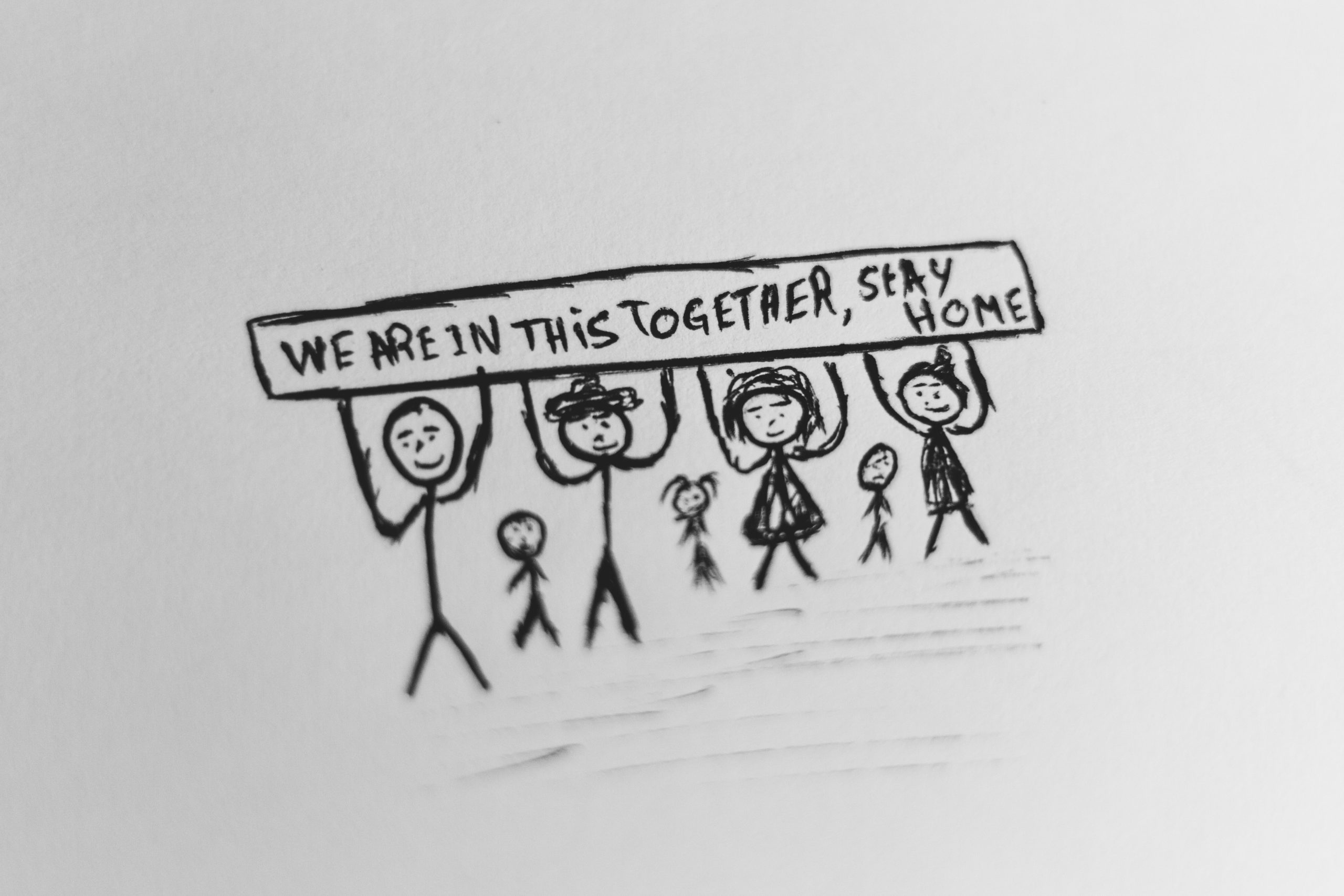
As much as we wish we could shield children from the existence of COVID-19, the truth is that they need tools and knowledge to stay safe and healthy during this crisis. Maria Montessori believed in giving children practical knowledge and empowering them to handle the world outside the classroom. The following talking points will help you have an effective conversation with your kids about coronavirus safety and response.
Explaining How Germs Work
If your kid hasn’t taken a basic science class, they might not know what bacteria and viruses are or how they work. Some kids might benefit from an impromptu science lesson, but if you want to keep things quick, you can explain that the coronavirus is an incredibly small particle that makes you sick if it gets into your body. Coronavirus is too small to see, but it’s still there, and we can still fight it.
Tell your child that people who have coronavirus will create more particles until they get better, which can take anywhere from two weeks to a month. They can spread those particles by breathing, which is why they need to wear a mask. If they spread those particles around, many other people will also get sick. That’s why anyone who is sick needs to stay home.
Finally, remind your kids that this coronavirus is an airborne particle. When a sick person sits in a room, they can fill up the air with COVID particles, just like you can breathe steam into a glass jar. But if you open a window or spend time outside, the particles will float away in the air. Breathing in too much COVID will make you sick or sicker, so it’s important to get plenty of fresh air during this pandemic.
Explaining the Symptoms of COVID-19
The common cold is also a coronavirus, and you might use this comparison to help get the message across. However, make sure to tell your kids that COVID-19 is a strong and dangerous coronavirus that can make people very sick.
If your kids want to know what the coronavirus does, say that this cold starts in the lungs, which is why it makes people cough and sneeze. The virus can also give you a very bad fever that makes you dizzy and tired. Coronavirus makes you lose your sense of taste and smell; in fact, that’s one of the best ways to know if you have it. The worst cases of coronavirus make you so sick that you need to see a doctor.
Teaching Hygiene Habits
Now that your kids know what COVID-19 is, it’s time to tell them how to fight it. Good hygiene habits will keep them safe from this virus and any others they come across in the future.
Start by saying that soap is the best way to destroy coronavirus particles before they enter the human body. If the virus is on your hands and you wash them before you touch your face, you won’t get sick. Tell your kids to wash their hands every time they enter the house to keep from spreading coronavirus around.
If you have to take your kids out of the house during the pandemic, ask them to change their clothes and take a shower when they come back inside. This will reduce the viral load that they bring home and help keep the entire family healthy.
Teaching Social Distancing
Social distancing is one of the most important tactics when it comes to preventing the spread of COVID-19. Explain to your child that if you never come into contact with another person, they can’t pick up any of your germs – and that means that people should stay away from each other for the time being.
Your kid may wonder why they should social distance from their friends but not from their family members. Explain that people from the same house almost always share some of the same germs, so it’s okay if they sit close to each other. In fact, families sharing germs is why social distancing is so important; if one person brings coronavirus home, everyone in the family could get it.
Even if kids understand why they need to keep their distance, they may have trouble adapting to the new social standard. Children who aren’t old enough to use digital media will suffer the most from a continued lack of playdates and classroom time. You can help by facilitating virtual hangouts for their friend group, maintaining phone contact with other families, and spending more of your own time with the kids.
Handling Grief
Even when they’re not old enough to understand the full implications, many children are able to grasp the danger and consequences of a deadly virus in their society. Be on the lookout for signs that your kid is experiencing grief or depression, and be ready to offer them emotional support.
Young children typically handle grief through disengagement. Signs that they are upset can include a change in appetite, lack of interest in normal hobbies, or tears and tantrums that seem out of place. Many kids don’t know why they are upset or don’t have the words to express it. As a parent, try to notice these signs and provide comfort without demanding an explanation.
Helping children learn to grieve is important for their development. Take some time to understand your own feelings of loss, and offer your child support in a way that works for your family.
Expect to explain the nuances of COVID-19 to your children over several conversations. As they grow up through this pandemic, they’ll want to know more about how coronaviruses work and what steps are being taken to keep people safe. The narrative you present should be sensitive to their age while remaining coherent, informative, and factual. Be proactive about how they’re handling the situation; kids can’t always tell you what they need.





















